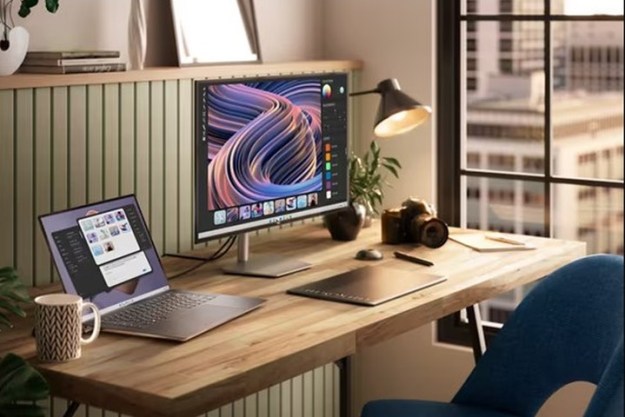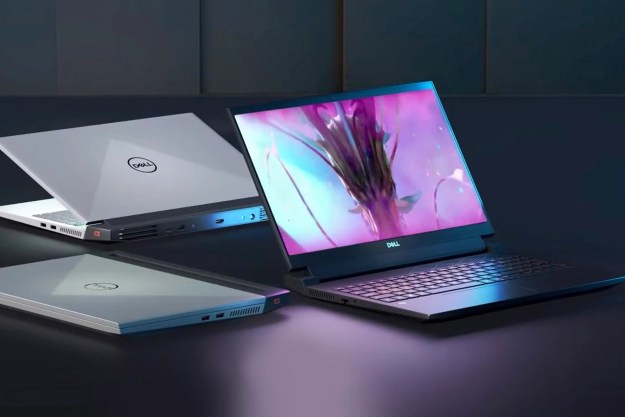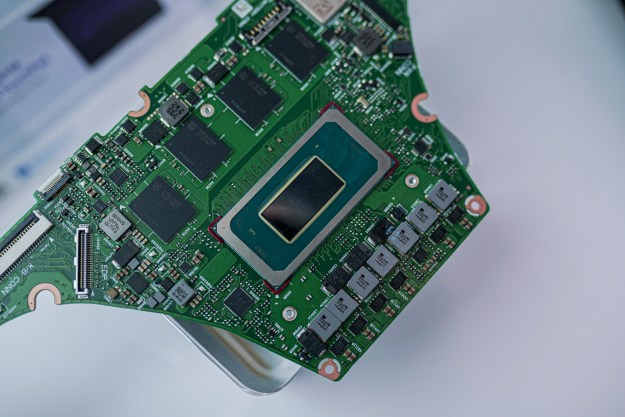Which acts are performing? For the most part, that’s all the information necessary to decide if you are willing to bake under the naked sun for a 10-hour music festival.
But Coachella-organizer Goldenvoice decided to differentiate the inaugural three-day Panorama Music Festival, which was held at Randall’s Island Park last weekend in New York City, with The Lab. It’s an exhibit space enclosed in a 70-foot dome, housing seven immersive tech installations.
Where every movement plays an instrument, the commotion of the festival was overpowered by a whirlwind of bell chimes.
The Lab was designed by visual design company Meta.is, which also picked the New York City artists that worked on the installations. The installations range from the mindlessly fun, such as an inflatable structure that emits sound every time a person bounces on it, to the dazzling, including an immersive film shown on the surface of a 70-foot dome.
Debuting at a music festival was a bold choice for The Lab. It easily could’ve been lost in the commotion and noise. Instead, the exhibit defined itself as a star attraction, proving once again that art and technology belong together.
A spectacular entry
Making it into The Lab, with its line that stretched half a football field, was all about preparation. You needed plenty of water to combat the dehydration endured while standing in line under the hot summer sun. When you finally entered the windowless Lab you were met with a poster-sized board explaining how the Lab intersects music and technology.
The minute you made a short left around that wall, you could see at least six installations without moving an inch. With exhibits in close proximity, and some involving physical activity that bled into the walking lanes, The Lab mimicked the hectic feel of the festival outside.
Visual artist Beau Burrows’ installation Visceral Recess was an inflatable bounce house that played music with each bounce, and shone a brilliant array of colors. “It was the most interactive and fun, because I became a composer with my body,” said Tat WZA, co-host of Hot 97’s Hot in Tech web series.
People were literally bouncing out of Visceral Recess and into the crowd awaiting a chance to create shadowy letters on a video screen as part of Zachary Lieberman’s Reflection Studies installation. Liberman’s exhibit would let you play with an assortment of letters scattered across a table emitting light, with the letter arrangements appearing on in front of you, on a large screen, in real-time.
Beside Visceral, and out of bouncing range, you could see multimedia artists Dave Rife and Gabe Liberti’s Hyperthread, a cocoon of seven silk sheets which act as music instruments upon touch. In a room where every movement plays an instrument, the commotion of the festival was instantly overpowered by a whirlwind of bell chimes.
HP Ad Exhibit
While innovation was the proposed theme, The Lab often felt like a pop-up shop to sell products from HP, the event sponsor. Under each video board displaying the name and description of the installation was a list of the HP products used in its creation. From a far, and in quick passing, you could often make out the names of the HP products clearer than anything else.
One of the first, and largest, exhibits was the Spectre x360 Interactive Experience, where people sat down in front of a panoply of glowing balloons and played with HP’s Spectre X360. Sharing photos taken with the x360 on social media was the main draw, and that stuck out like a sore thumb among the other, more creative installations. Still, it attracted a large crowd.
Gabriel Pulecio’s work, Infinite Wall, was one of the smallest in terms of floor space, but the interactive glass mirror walls were equipped with motion sensors, so every movement spurred colorful lights that zipped across the walls in real time.
“The idea with this is you enter and you need to walk around the piece to discover what it does.” Pulecio told Digital Trends. “In that sense it’s trying to live in that moment, in that space, and trying to find yourself in a different level of reality.” Pulecio says it took two months to create Infinite Wall, mostly using HP’s Z840 workstation to run the LED panels and render the graphics in real-time.
Virtual reality without a headset
The Lab greeted visitors with a sign that claimed “nothing stands out quite as much as The Dome.” You’d find that an understatement. The Dome was an immersive group experience where dozens of people were encouraged to lay on their back and gaze up at colorful abstract shapes, all projected on the massive 70-foot dome. The film’s video was handled by creative studio Invisible Light Network and experiential production company Dirt Empire, with the atmospheric audio handled by creative audio studio Antfood.
Though the exhibit was incredibly crowded, the discomfort would fade, as you’d be too busy trying to keep up with the massive screen to worry about someone’s knee being in your thigh. People yelled in unison when the film showed orbs of light quickly descending. A group of strangers willfully packed together to get the best experience possible, even if it meant laying on dirty surfaces hundreds of people walked on that day.
This was the only exhibit you could experience without the names of the HP products put in your face once you enter. The information was still available on the far left side of the space, and ILN founder Elliott Kealoha Blanchard told us HP’s computers made easier the arduous task of making a film for a 70-foot screen.
“We used A LOT of HP high-end computers,” Blanchard said. “The thing about this film is, because it’s in a dome, we had to render it at extremely high resolution, 4K specifically, just to get something that looks good.” Blanchard stated ILN completed the project in roughly two months, and used computer animation software Maya, Cinema 4D, and After Effects to make the video for The Dome.
A group of strangers packed together for the experience, even if it meant laying on dirt hundreds of people had trod through.
If you were a skeptic, you might argue the dome wasn’t the “virtual reality theater” festival goers were promised. But META.is founder and creative director Justin Bolognino explained why The Dome is a close, and better cousin of virtual reality.
“I’m not knocking VR, but you don’t hang a picture frame on the side of a building 20 stories up,” Bolognino said. “Just like you don’t put on a VR headset in public.” For him, hundreds of people laying around, jumping and yelling at videos of orbs descending, mimics the corporeal feeling virtual reality delivers. Whether you’d agree is up to you, but the crowd certainly seemed enthused.
The Lab had lines long enough to deem it a success. With Goldenvoice chief and Coachella creator Paul Tollett intimating The Lab could make an appearance at Coachella, you can expect it to become a festival mainstay.
Editors' Recommendations
- Meet the Illuminarium: The multisensory theater that makes IMAX look prehistoric
- HP teams with Valve on Reverb G2, ‘world’s highest-resolution VR headset’






